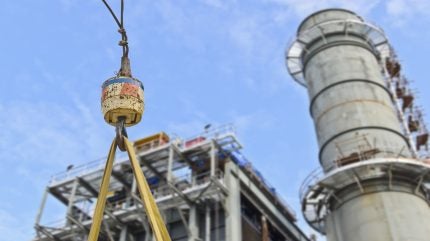
Sri Lanka’s Ceylon Electricity Board (CEB) has signed a power purchase agreement (PPA) for the Sahasdhanavi power plant, a 350MW combined cycle power plant.
The plant will boost Sri Lanka’s renewable energy sector by providing reliable and affordable electricity, especially during the night-time and periods of low wind.
Sahasdhanavi Limited will construct and manage the plant, with ownership passing to CEB after 25 years of operation.
The construction of the power will commence in 2025, with electricity set to be delivered to the national grid within 30 months through open cycle operation. Full combined cycle operations will begin after a further 12 months.
Operating on regasified liquefied natural gas (R-LNG), the power plant will provide flexible, on-demand power, balancing the variability in solar and wind energy generation.
By 2028, Sahasdhanavi and similar plants will transition from diesel to R-LNG, reducing fuel costs by 50% and significantly lowering emissions.

US Tariffs are shifting - will you react or anticipate?
Don’t let policy changes catch you off guard. Stay proactive with real-time data and expert analysis.
By GlobalDataThis transition will ensure essential grid reliability as Sri Lanka expands its solar and wind generation capacity. R-LNG serves as the key transition fuel as Sri Lanka moves towards a renewable-powered future.
In December 2024, the government approved the establishment of Sri Lanka’s LNG supply infrastructure, led by CEB and CPC.
The project includes the development of a floating storage and regasification unit (FSRU), R-LNG pipelines and supply facilities to serve power plants and industrial consumers.
This infrastructure will enable the conversion of existing oil-burning power plants to R-LNG, providing cleaner, cost-effective energy for industrial heating, such as in the glass, tiles and ceramics industries, reducing their heating costs by up to 40%.
Transitioning to combined cycle operations using R-LNG, Sahasdhanavi will generate approximately 37 kilowatt hours (kWh) of electricity, allowing for lower tariffs for families, businesses and industries.
CEB is implementing a suite of transformative projects to future-proof Sri Lanka’s energy landscape: the Maha Oya pumped hydro project (600MW by 2032) for storing surplus renewable energy, battery energy storage systems for grid stability and renewable integration, and smart grid modernisation to improve reliability, efficiency and real-time control.
These initiatives are designed to provide dependable, cost-effective and sustainable electricity for everyone, aiding Sri Lanka’s shift from fossil fuels while maintaining grid stability.



